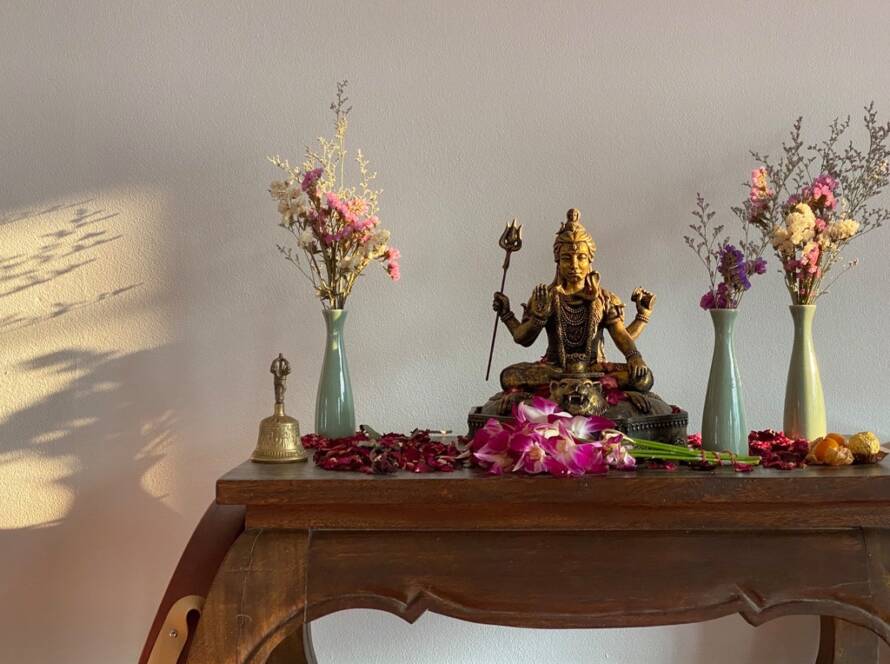Recognising the Presence of Inner Conflicts
Inner conflicts often cause discomfort, making it clear that different parts of our being are pulling in opposing directions. The first challenge is to recognise that an inner conflict exists in the first place.
We live in a dualistic world, while actually beyond the illusion of duality, everything is one. This already creates significant inner contradictions. Inner conflicts are further shaped by our upbringing, social and cultural norms, expectations, and inherited ways of thinking. When these elements contradict our personal experiences, feelings, or deeper intuitive truths, then inner conflicts arise. Even our own past experiences create patterns that may not always align with our current reality.
Usually, the sign of inner conflict is a sense of incoherence within ourselves. Something feels out of place, and sometimes, we might even need an external perspective to find out what that is — whether from a therapist or a trusted friend — someone reflective enough to notice contradictions within us and honest enough to point them out. Afterwards, it always requires our own inner research to find the contradictions inside.
The Impact of Inner Conflicts on Well-Being
The more we resolve inner conflicts, the more coherent we feel. When thoughts, beliefs, and experiences are more aligned, there are fewer contradictions, and we become happier. Then, we feel continuously integrated, finding our natural place and sense of belonging. One of the signs of existing inner conflicts is rarely feeling like this.
Other signs of unresolved conflicts are feelings of loneliness, misunderstandings, and a sense of being a misfit. These conflicts increase our mental and emotional struggles and require our full attention. While some mental health issues have a genetic root and need professional therapy, many emotional imbalances arise from deep inner contradictions. If we feel that our inner universe and outer experiences contradict each other, we can check with ourselves: how often do we feel that we fit in, that we have a place, that we have a role, a purpose, that we feel content?
The cause of every inner conflict lies in a lack of awareness in the area where incoherence persists. For example, a person may be highly conscious in certain areas of life, such as work, and manage this area very well, but they struggle with unconscious patterns in love relationships, family life, or personal identity. After seeing the conflict inside, the next step is establishing a consistent practice of self-awareness.
Consciousness in Resolving Inner Conflicts
The key to the next step is to bring more consciousness to the areas of life where contradictions exist. Consciousness acts as an organising force, bringing clarity and order to the inner world. It tends to settle everything exactly in the place where it belongs. Yoga, meditation, and mindfulness are very effective in helping to resolve symptoms like stress, anxiety, and depression. Creating a dedicated time for us to sit with ourselves, to feel through spiritual practice, allows deeper aspects of the self to come into awareness.
As we attend to our inner universe by spiritual practice with the eyes closed, focusing inside, feeling ourselves, our breath, our energy moving. Just sitting in meditation, quiet with ourselves, is already a major step in creating a greater embrace of consciousness within our being. It tends to sort things out and put things into place.
Besides regular yoga and meditation practice, tools like therapy, journaling and conversations with a good attentive friend are supportive on this path. A skilled therapist helps to expand self-awareness by reflecting thoughts and emotions back to the individual, bringing light to hidden contradictions. Simply listening, simply reflecting back, is a big therapeutic method. Such questions as “Am I hearing you right? Are you saying so and so? Okay, and how does that feel for you?” help to create consciousness within the other.
Journaling is a very good way to heal and deal with inner conflict. As we write, we bring subconscious thoughts into the conscious awareness, allowing a deeper self-understanding and an opportunity to reflect on the points between inner and outer worlds that are not matching. We can just digest what is going on with us. One of the simple journaling options is “morning pages”, where one writes freely without any censorship.
Patience and Diligence in the Process
Resolving inner conflicts is a gradual process that requires immense patience and perseverance. As contradictions dissolve, a person moves closer to inner freedom, integration, and ultimately, enlightenment. This journey of uncovering the inner universe needs daily diligence in self-examination, with honest and humble self-reflection, self-love and self-acceptance.
It is always tempting, especially for the egoic mind, to avoid confronting inner conflicts by externalising blame or rationalising inconsistencies. Unresolved conflicts eventually manifest themselves in one unpleasant way or another. If we can exercise patience, diligence, and a systematic approach on the path, to look inside with love, this is the path towards happiness and the ultimate goal of enlightenment.
Resolving inner conflicts is a necessary process of continuous self-awareness and integration. By recognising the contradictions within, bringing consciousness to them, and patiently working through them with practices like daily spiritual practice of meditation and yoga, therapy with a good professional, and journaling, we create more coherence between the inner and outer worlds.
As we become more integrated, we feel a greater peace, clarity, and a deeper sense of belonging. While the path requires a lot of dedication, honesty, and self-acceptance, it is available for everyone, and the reward is a more harmonious, fulfilling life — one where we truly feel at home within ourselves.
This article was transcribed and edited by Tony from the following video:


